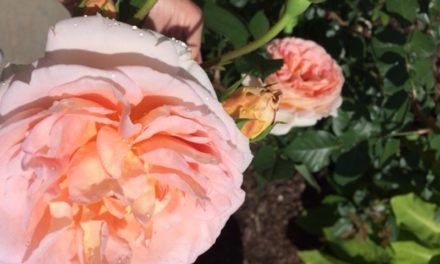 Several families are commonly known as gingers. Sold as ornamentals they can really spice up a garden bed and evoke exotic places. Many grow from fleshy underground stems or rhizomes and send up shoots with solid green, red, or striped foliage. I found eleven separate genera and some with multiple species and varieties listed in a plant catalogue hardy in zones 7-11.
Several families are commonly known as gingers. Sold as ornamentals they can really spice up a garden bed and evoke exotic places. Many grow from fleshy underground stems or rhizomes and send up shoots with solid green, red, or striped foliage. I found eleven separate genera and some with multiple species and varieties listed in a plant catalogue hardy in zones 7-11.
Many of them will grow just fine in a protected area in part sun to shade and bloom in summer and fall. Size will vary from the lush and colorful leaves of Kaempferiasp. at 5”- to some of theAlpiniaand Hedychium6-12 feet tall. Here is a quick survey of some that we can grow in the South Carolina Lowcountry from AlpiniatoZingerber.
Alpinia officinarum (Thai Spice Ginger) is cultivated for its edible rhizomes which are used in curries. A member of the Zingiberaceae family they are also used in herbal medicine. A very common landscape plant that is not preferred by deer is the variegated shell ginger, A. zerumbet‘Variegata’. It can grow 4-6’ where it is protected blooming in the winter with lovely lush yellow striped foliage.
Asarumand Hexastylis’common names are Wild Ginger, Heartleaf and Little Brown Jugs. They are low growing herbs found in North American woodlands in Birthwort family, the same family as Dutchman’s pipevine. They are also both used in traditional folk medicine tonics for indigestion or flavoring.
Cardamom is also in the Ginger family and native to the Indian subcontinent. First references to this spice are found in the Ayurvedic literature of India, and one of the largest suppliers since 2000 is Guatemala. Cardamom is made from the seeds and is the third most expensive spice, by weight, after vanilla and saffron.
Costusare known as spiral gingers due to their tall twisting stems. There are about 8 species that are reliably hardy in zone 8b, and some are compact enough to grow in pots and overwinter indoors. The Red Tower Ginger has large showy dark red bracts with small yellow flowers. The Red Spiral Ginger has spiraling canes, green leaves with red backs, and yellow flowers that open in succession, daily. Not a true ginger Costus are in the Costaceae family.
Curcumaor hidden ginger is also called turmeric used to treat a variety of different ailments has been used for 4,000 years as a wound healer and anti-inflammatory herb. As a showy ornamental the Pink Tulip or Curcuma alismatifoliahas a pink inflorescence and stiff leaves that are about two feet long. The Hidden Ginger C. zedoariacan get four feet tall, has maroon bracts, and yellow tubular flowers followed by maroon striped leaves.
Globba spp. Dancing girl ginger is one of the easiest to grow. The showy bracts definitely resemble dancing girls, and bloom for a long period.
Hedychium spp.are another hardy ginger grown for food, medicine, and spice. The most common one is the H. coronariumor butterfly ginger. Resembling white butterfly wings, it is used for flavoring, incense, and as a sedative.
Kaempferia spp. These have very showy leaves and small but beautiful flowers. The common names tell the story from Brush Strokes Ginger, Grande Peacock Ginger, Raven Ginger, to Silver Diamonds Ginger. What gardener would not want to have these jewels as a ground cover for shade?
Zingiber officinaleis the pungent aromatic spice we are all familiar with used for cooking, ginger ale, and folk medicine. Zingiber spp. are the Pine Cone, Shampoo and Milky Way Ginger.
So little time. So many Gingers.








